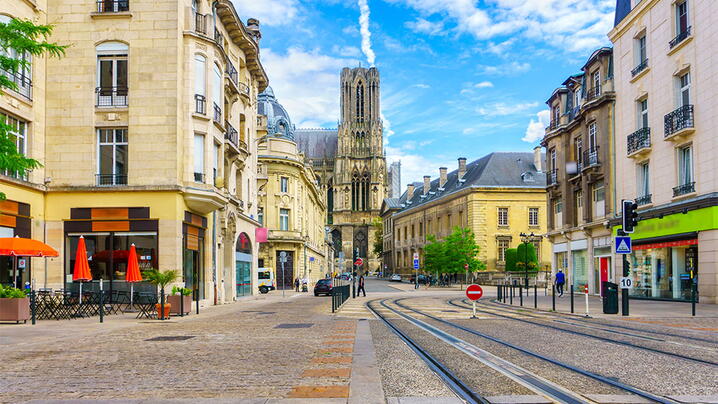
by Sheryl L. Bower, AICP, community development director, Garfield County, CO
Since the 1940s and 50s when the federal government passed bills providing funding for the interstate system and housing for veterans returning home from the war, planning our communities was about the separation of uses. Zoning districts were created to ensure that single-family residents were separated from commercial uses and more dense residential uses. This resulted in homogeneous single-family developments, house-after-house of sameness. As one development leapfrogged over another consuming rural lands and open spaces, public utilities were stretched farther and farther out; the cost of providing those utilities was borne by the taxpayers. Funding which could have gone to making communities better places was funneled to unplanned development. As utilities became available, more homes were built and more highways, creating sprawling development with little sense of place or community. Pedestrian and bicycle facilities were often not considered, as it was just assumed people would rather drive than walk or bike, and in many cases this was true as high volume, high speed highways are dangerous for those outside of vehicles. This made transportation difficult to provide to this type of development, in part because the densities were lower and could not support transit. Subdivisions, along with big box retail outlets, were designed to accommodate cars, not those walking to/from bus stops.
While this type of sprawling development still occurs today, in the late 1980s urban planners and community leaders started to question the benefits of sprawl and its impacts on our communities. Was this really the best way to develop? Was this type of development enhancing the quality of life for our residents? Many came to realize that this type of development did nothing to promote our communities, it wasn’t sustainable, and certainly didn’t create great places. Development that is designed for the fast and efficient movement of autos resulted in land use patterns that promulgated the need for more auto-centric development, it wasn’t getting better. They began to look at a different model for development and what most found was that there was a time when we did a better job at creating great communities. The cities and towns that arose prior to autos had many of the features that people appeared to want (as evidenced by the many people wanting to visit or live there). They were walkable, they had a diverse mix of uses, a wide variety of housing types appropriate for people of a wide range of incomes and life stages (aging in place), they promoted small business, roads were designed to be context sensitive and serve just not cars but pedestrians and cyclists, and compact development patterns placed far less burden on infrastructure. In the early days of this “new” old way of looking at urban development, called New Urbanism, it was a return to creating human developments based on tried and true urban models.
These urban forms that worked so well could be replicated through the use of form-based codes. Unlike the zoning that is based on the segregation of uses (Euclidian Zoning), form-based codes are based on how buildings are placed in relationship to each other and the public realm, to create places that are human scale, designed for people. As this idea that communities should be designed for people first caught on, more and more communities developed plans and land use resources that followed these principles. By the late 1990s, this type of development also became known as “smart growth."
The US Environmental Protection Agency (EPA) developed the following guidelines for Smart Growth:
1. Mix land uses.
2. Take advantage of compact building design
3. Create housing opportunities and choices for a range of household types, family size, and incomes.
4. Create walkable neighborhoods.
5. Foster distinctive, attractive communities with a strong sense of place.
6. Preserve open space, farmland, natural beauty, and critical environmental areas.
7. Reinvest in and strengthen existing communities and achieve more balanced regional development.
8. Provide a variety of transportation choices.
9. Make development decisions predictable, fair, and cost-effective.
10. Encourage citizen and stakeholder participation in development decisions.
The Sustainable Communities Advisory Committee found a number of great examples of land use codes that seek to achieve smart growth. These include a sampling of smart-growth-based codes from the American Planning Association, model codes from the Form Based Code Institute, various resources from Smart Growth America, neighborhood street design guidelines, tiny homes, accessory dwelling units, and complete streets ordinances. Look forward to the download of these model codes and ordinances on Monday, April 29.
 Sheryl Bower, a certified Urban Planner, has 25+ years of senior management experience in the public sector and eight years of private sector professional planning experience. Ms. Bower, has expertise in entitlements, policy development, comprehensive planning, land development regulations, administration of CDBG, public participation, economic development, transit oriented development, providing for transportation options and grant writing. Ms. Bower has managed projects ranging from 13,000 acre New Towns, to Golf Course Community Redevelopment, the development of Form Based Codes, charrettes and government services related contracts, along with the establishment of TOD, promoting mobility options, improving customer service and implementing strategies to attract and retain businesses.
Sheryl Bower, a certified Urban Planner, has 25+ years of senior management experience in the public sector and eight years of private sector professional planning experience. Ms. Bower, has expertise in entitlements, policy development, comprehensive planning, land development regulations, administration of CDBG, public participation, economic development, transit oriented development, providing for transportation options and grant writing. Ms. Bower has managed projects ranging from 13,000 acre New Towns, to Golf Course Community Redevelopment, the development of Form Based Codes, charrettes and government services related contracts, along with the establishment of TOD, promoting mobility options, improving customer service and implementing strategies to attract and retain businesses.
Other Links of Note for Sustainability
The Uncertain Transportation Landscape. As roadway capacity dwindles, it's time for smart decisions.
Coexisting at the Edges, Meet the New Exurban. How politics, economics, and land use are changing at the urban/rural interface.
Resilient Land Use and Development Planning for Dominican Republic Municipalities. A resource notebook for integrating climate change considerations.
Sustainability topic page. Find case studies, original research, and reports that feature sustainability initiatives from communities around the world.
Identifying Opportunities in Operations Management to Reach Your Sustainability Goals. Municipal operations provide an opportunity to reduce the impact on human and environmental health.
Harnessing the Power of Utilities. Sustainability is not a choice, it is a way life. We cannot blindly go forth without realizing the impact that our footprint leaves on future generations.
New, Reduced Membership Dues
A new, reduced dues rate is available for CAOs/ACAOs, along with additional discounts for those in smaller communities, has been implemented. Learn more and be sure to join or renew today!
